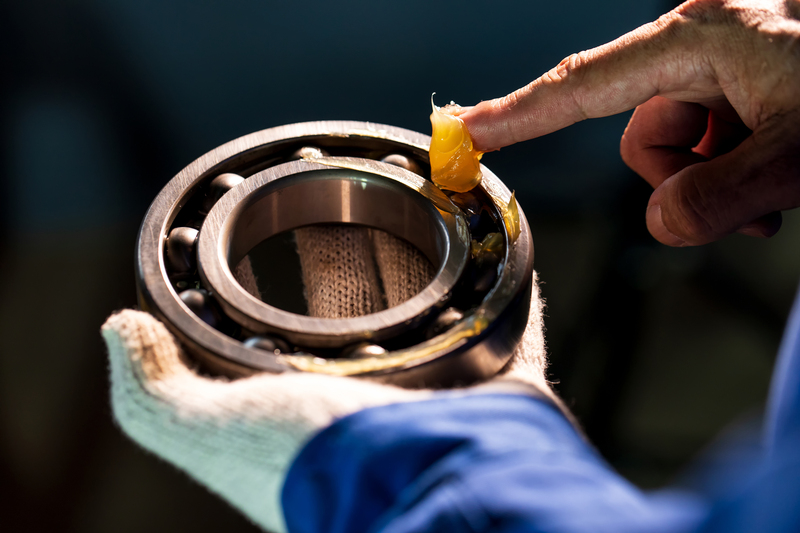Need Support?
Please provide your question. We’ll find you with the best support options.
1.Understanding Bearing Tolerances
2.Overcoming Bearing Abnormal Noise
An Overview
Bearing tolerances are a key element in ensuring the reliability and proper operation of bearings. Tolerances include the inner ring and outer ring tolerances, which are defined by standards to ensure good bearing fit. Abnormal noise refers to the non-standard sounds generated during bearing operation, which may result from vibration, metal collisions, or clunking noises, among other causes. Controlling bearing tolerances and addressing abnormal noise are crucial for ensuring bearing quality and performance. By implementing appropriate tolerance control and preventive measures against abnormal noise, smooth operation, long service life, and meeting application requirements can be ensured.
Bearing tolerance refers to the permissible range of dimensional differences or variations allowed during the manufacturing process of bearings. It is designed to ensure the reliability and proper functioning of the bearings. Tolerances are typically specified by standards or specifications to ensure that bearings can properly fit in different application scenarios.
Bearing tolerances are divided into two parts: inner ring tolerance and outer ring tolerance. The inner ring tolerance refers to the range of dimensional differences in the inner ring of the bearing, while the outer ring tolerance refers to the range of dimensional differences in the outer ring of the bearing. These two tolerances are usually relative to each other to ensure that the bearing can properly fit with the shaft or housing while maintaining the appropriate clearance or preload.
Bearing tolerances can be expressed in various ways, with the most common being the use of upper deviation and lower deviation. The upper deviation represents the range in which the bearing size is larger than the standard size, while the lower deviation represents the range in which the size is smaller than the standard size. This representation allows the tolerances of bearings to be controlled within specific ranges during the manufacturing process to ensure the quality of the bearings.
The selection of bearing tolerances depends on the requirements of the application and the operating conditions of the bearings. If high precision and high-speed operation are required, smaller tolerances need to be chosen to ensure accurate motion of the bearings. Conversely, if the bearings are operating under heavy loads or harsh environments, larger tolerances can be selected to accommodate larger variations.
In summary, bearing tolerances are designed to ensure the proper fit of bearings during manufacturing and installation. By controlling tolerances, bearings can properly fit with shafts and housings, resulting in reliable operation. The choice of appropriate tolerances depends on the requirements of the application and operating conditions to ensure that bearings can achieve the desired performance and longevity.
 Further Reading: Unveiling the Mystery of Ball Bearing Sizes: Dive into the Significance of Dimensions
Further Reading: Unveiling the Mystery of Ball Bearing Sizes: Dive into the Significance of Dimensions
Bearing abnormal noise refers to the non-standard sounds generated during the operation of a bearing. These noises can be caused by various factors and may indicate issues or faults in the bearing.
The types and characteristics of bearing abnormal noise can vary. Here are some common types of bearing abnormal noise and their possible causes:

Vibration noise: When the bearing experiences abnormal vibrations, it produces vibration noise. This can be due to improper installation leading to loose bearings or damage and wear of internal components. Vibration noise may indicate the need for adjustment or replacement of the bearing.
High-frequency humming noise: In high-speed bearings, an imbalanced or improperly installed internal component may produce a high-frequency humming noise. This requires balancing adjustment or reinstallation of the bearing.

Metal collision noise: When metal parts inside the bearing collide or rub against each other, it creates metal collision noise. This can result from insufficient lubrication or inadequate lubrication of the bearing, or it may be caused by damage or wear of internal components. Metal collision noise indicates the need for lubrication or replacement of damaged parts.
Hissing noise: When the bearing emits a hissing noise during operation, it could be due to poor lubrication or the presence of contaminants within the bearing. This may necessitate bearing cleaning and re-lubrication.
In the presence of bearing abnormal noise, prompt investigation and maintenance are essential. Ignoring bearing abnormal noise may lead to more severe mechanical equipment failures, even directly impacting the overall operational capacity of the company. For complex bearing issues, it is recommended to contact ISK BEARINGS' consulting team for problem diagnosis and resolution to ensure proper repair and maintenance.
Discover more about the features and applications of various bearings.
Click here to explore more articles and find the perfect bearing for your project.
Needle Bearings (Roller Bearings) are a type of bearing that performs exceptionally well at high speeds. Their rollers are precisely guided by specially shaped, high-rigidity cages with minimal dimensional error. Despite their small cross-section, needle bearings...
How Do Ball Bearings Work? Bearings are often small and unassuming components in a product, yet they are crucial for its proper functioning. Without bearings, many products would fail to operate effectively. But do you know how ball bearings...
Please provide your question. We’ll find you with the best support options.